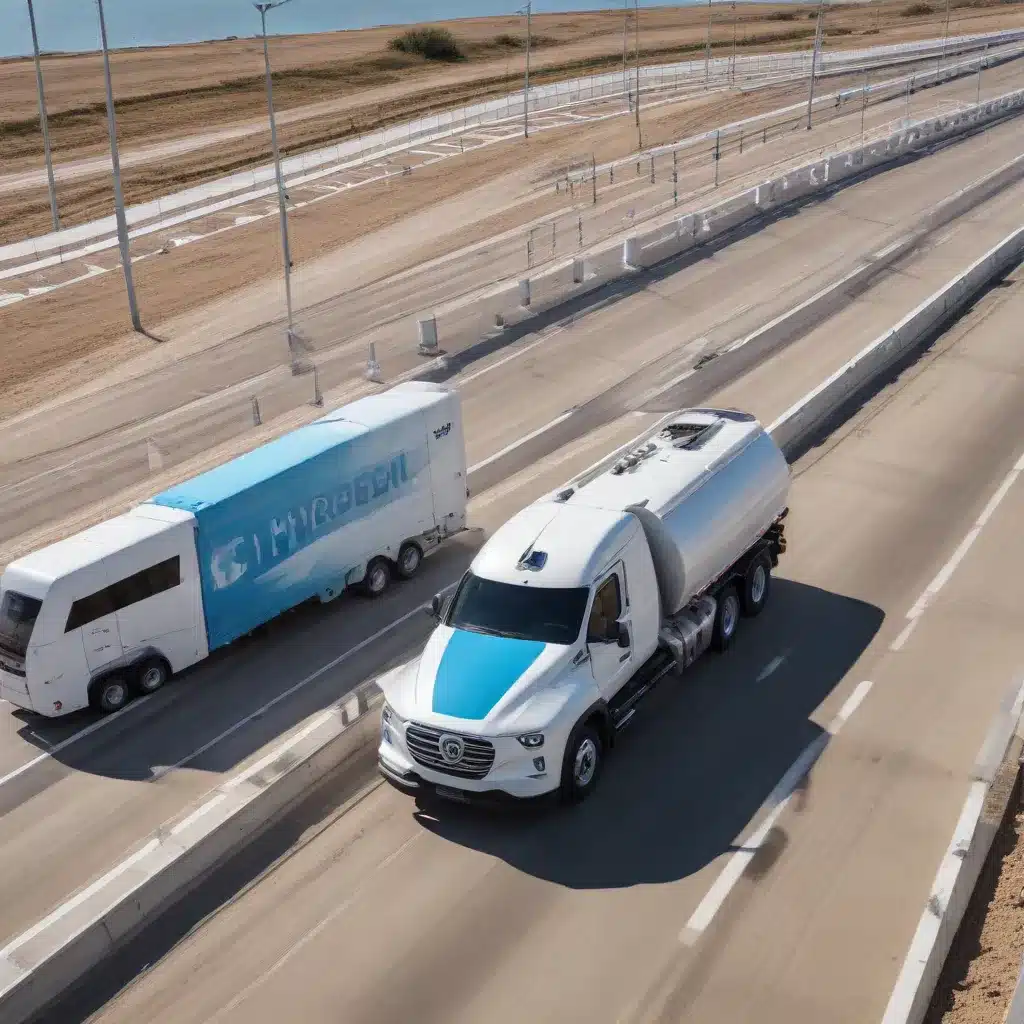
Hydrogen Economy Policy Design: Aligning Incentives and Driving Investments
The global energy transition has catalyzed a surge of interest in hydrogen as a clean, versatile energy carrier. Hydrogen can play a pivotal role in decarbonizing hard-to-abate sectors like heavy industry and long-haul transportation. Yet realizing the potential of a “hydrogen economy” requires carefully designed policy frameworks to align incentives and drive strategic investments.
Europe, in particular, has emerged as a frontrunner in hydrogen development, with ambitious plans to scale up production and expand use cases across the energy system. By examining the policy landscape in Europe, we can glean insights into effective strategies for cultivating a thriving hydrogen economy.
Incentive Structures
Governments are deploying a diverse array of policy instruments to incentivize hydrogen adoption and spur private investment. These include both direct policy incentives and financial incentives.
Policy Incentives
Regulatory mandates, such as renewable energy targets and zero-emission vehicle (ZEV) quotas, create a market pull for hydrogen and other clean energy solutions. The European Union’s updated Renewable Energy Directive, for instance, sets a binding target of 32% renewable energy by 2030, driving increased demand for hydrogen to complement variable renewable electricity.
Complementary policies, like carbon pricing and fuel economy standards, further reinforce the business case for hydrogen by increasing the relative cost of carbon-intensive fuels and technologies. The EU Emissions Trading System, the world’s largest carbon market, has seen prices surge in recent years, enhancing the competitiveness of low-carbon hydrogen.
Financial Incentives
Governments are also leveraging a range of financial incentives to support hydrogen infrastructure development and technology innovation. Investment tax credits, production tax credits, and feed-in tariffs help offset the higher upfront costs associated with emerging hydrogen technologies.
The EU Innovation Fund, for example, provides grant funding for commercial-scale demonstrations of innovative low-carbon technologies, including hydrogen electrolyzers and fuel cell systems. Similarly, the European Investment Bank has earmarked billions of euros for hydrogen projects through its lending and advisory services.
Market-based Incentives
Beyond direct policy and financial interventions, governments are harnessing market-based mechanisms to drive hydrogen adoption. Carbon contracts for difference and hydrogen offtake agreements can provide long-term revenue certainty for hydrogen producers, mitigating investment risks and unlocking access to private capital.
The Netherlands, for instance, has pioneered the use of hydrogen valleys, which cluster hydrogen production, distribution, and end-use within a defined geographic area. These integrated value chains leverage economies of scale and network effects to enhance the economic viability of hydrogen solutions.
Investment Drivers
Effective policy design must address the multifaceted barriers to large-scale hydrogen deployment, from technology maturity to infrastructure constraints. Key investment drivers include:
Technology Innovation
Continued advancements in electrolyzer performance, fuel cell efficiency, and hydrogen storage solutions are crucial to reducing the cost of hydrogen production and utilization. Governments are supporting R&D efforts through initiatives like the EU’s Hydrogen IPCEI (Important Projects of Common European Interest), which mobilizes over €5.4 billion in public and private funding for innovative hydrogen technologies.
Infrastructure Development
Scaling up a hydrogen economy requires significant investment in production facilities, distribution networks, and end-use infrastructure. Policies like the EU’s Alternative Fuels Infrastructure Regulation and national-level hydrogen refueling station deployment targets can catalyze the rollout of the necessary support infrastructure.
Stakeholder Engagement
Fostering collaborative ecosystems among producers, consumers, and policymakers is essential to align supply and demand. The European Clean Hydrogen Alliance, for instance, brings together industry, civil society, and government representatives to co-develop a shared vision and investment agenda for hydrogen in Europe.
Policy Alignment
Realizing the full potential of hydrogen will require a holistic, cross-sectoral policy approach that integrates regulatory frameworks, coordinates stakeholder interests, and aligns with broader sustainability objectives.
Regulatory Frameworks
Harmonized standards, certification schemes, and safety protocols are crucial to ensure the interoperability of hydrogen systems and enable the free flow of hydrogen across national borders. The EU is working to establish a comprehensive regulatory framework, including the proposed Hydrogen and Decarbonized Gas Market Package.
Cross-sector Coordination
Hydrogen’s versatility means it intersects with multiple industries, from energy and transport to chemicals and steel. Effective policy design must therefore foster collaboration across these sectors to optimize system-wide efficiencies and address potential trade-offs or conflicting priorities.
Sustainability Objectives
Ultimately, the hydrogen economy must be aligned with broader climate and environmental goals. Policies should incentivize the production of green hydrogen (derived from renewable energy) over blue hydrogen (from natural gas with carbon capture) or grey hydrogen (from unabated fossil fuels). Lifecycle emissions, water usage, and material sourcing must all be carefully considered.
Hydrogen Production and Supply
The EU’s hydrogen strategy envisions a dramatic scale-up in production capacity, from the current 10 million tons per year to 40 million tons by 2030. Achieving this will require a multi-pronged approach to diversify hydrogen sources and enhance distribution infrastructure.
Low-carbon Hydrogen Sources
Europe is investing heavily in renewable electricity-powered electrolysis to produce green hydrogen, leveraging its abundant wind and solar resources. Complementary pathways, such as biomass gasification and methane pyrolysis, can also contribute to a diverse, low-carbon hydrogen supply.
Distribution and Storage
Transporting and storing hydrogen poses unique technical and logistical challenges. Retrofitting existing natural gas pipelines, developing dedicated hydrogen pipelines, and constructing large-scale underground storage facilities are critical infrastructure priorities.
Scaling Production Capacity
Driving down the cost of hydrogen production is essential to making it a viable mainstream energy carrier. Policy interventions that support economy of scale and technological learning in electrolyzer manufacturing can help achieve the necessary cost reductions.
The European Future Energy Forum provides a vital platform for policymakers, industry leaders, and researchers to collaborate on shaping the policies and investments that will unlock the hydrogen economy. By aligning incentives, fostering innovation, and coordinating cross-sector engagement, Europe can position itself as a global leader in this transformative energy transition.







